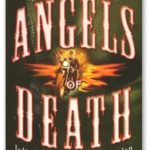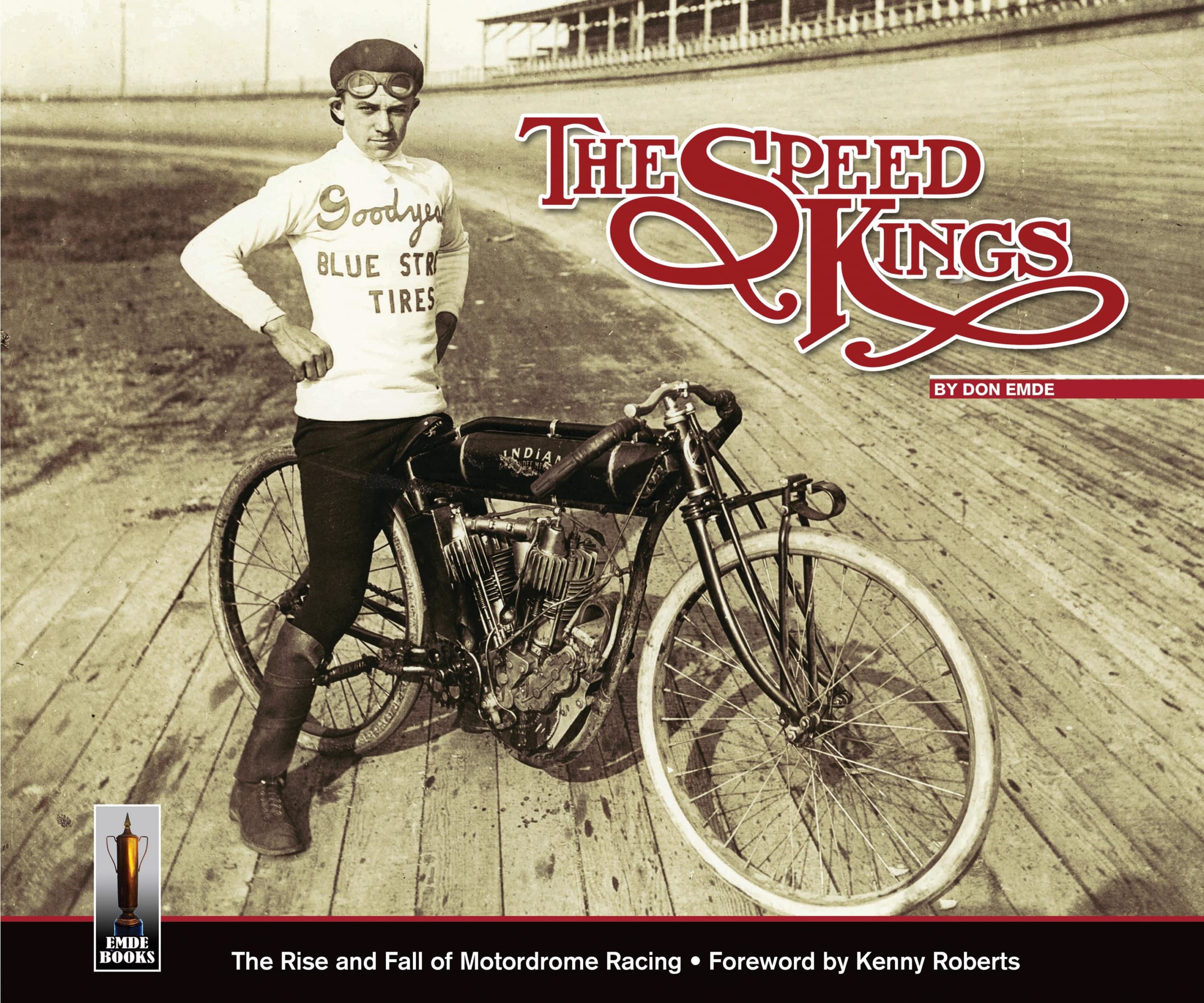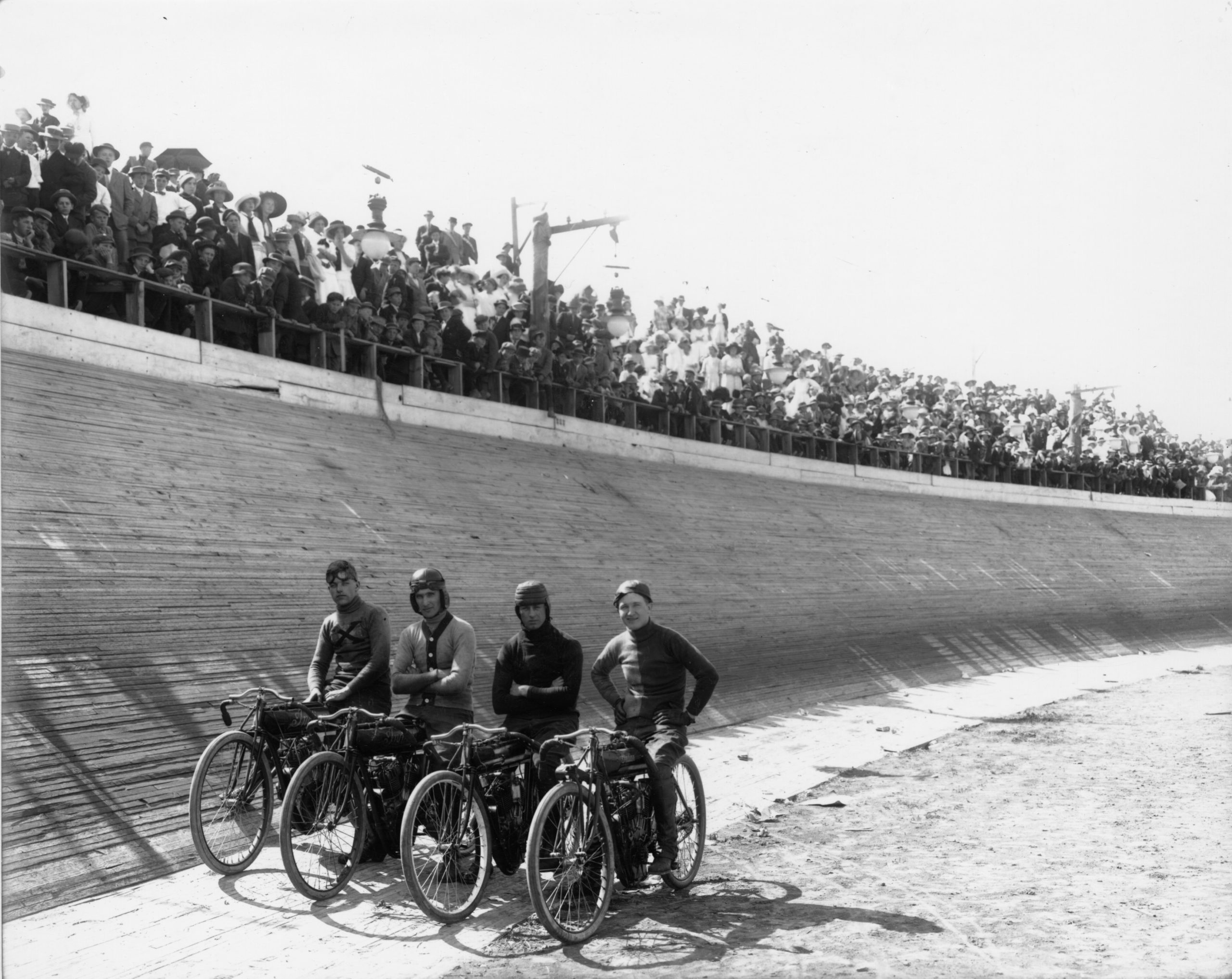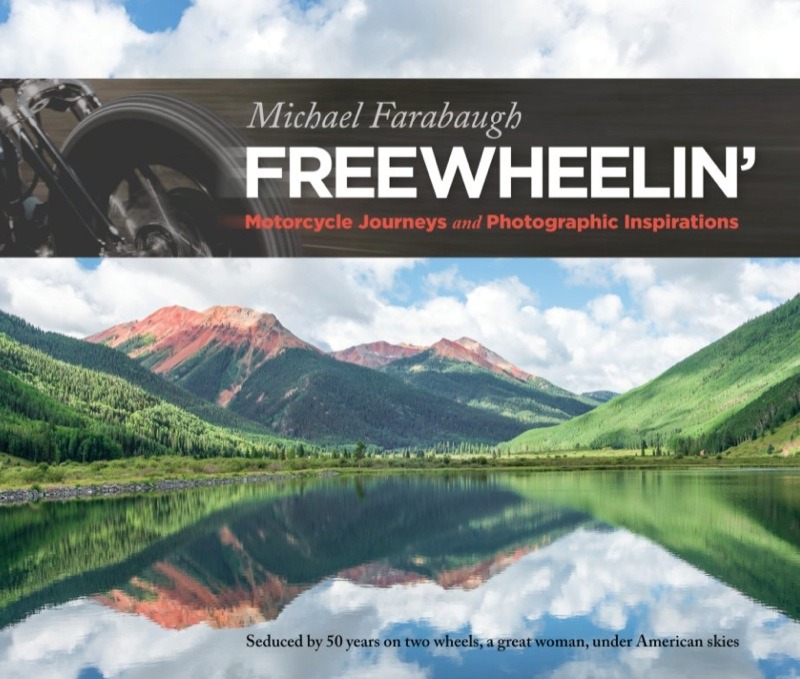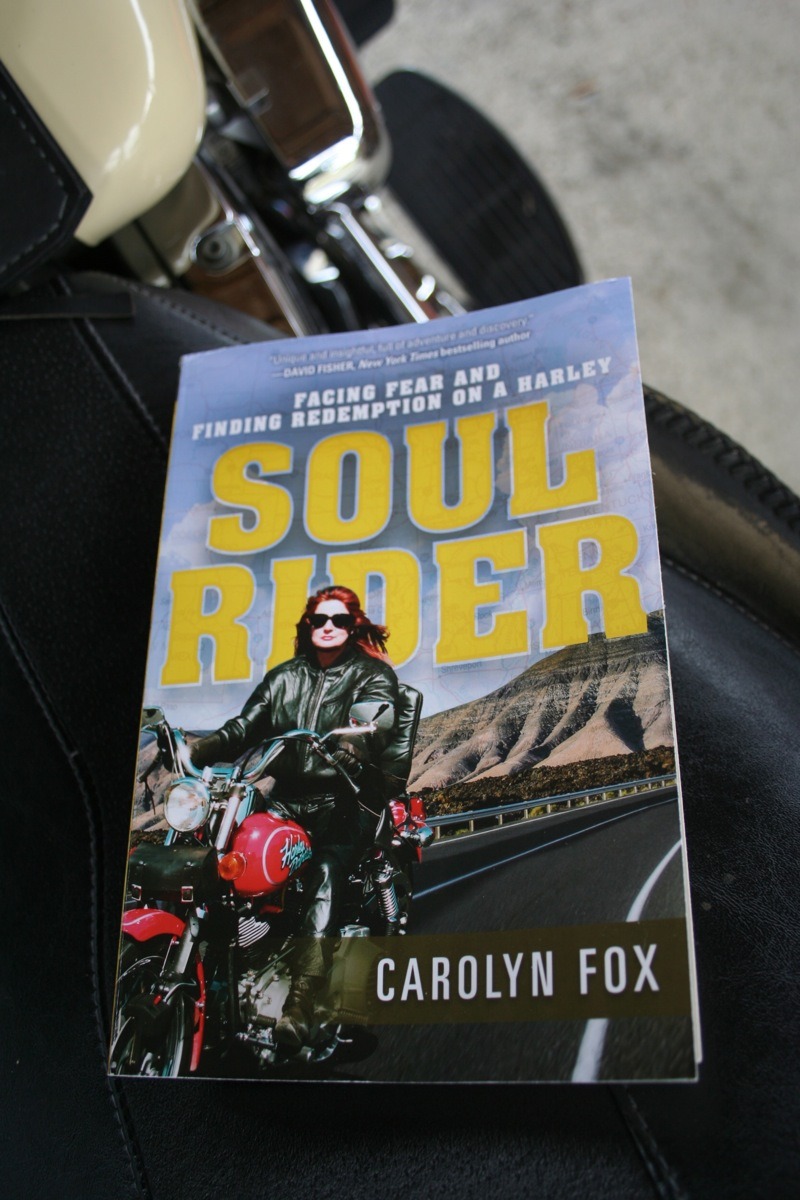Befriend and Betray: Infiltrating the Hells Angels, Bandidos and other Criminal Brotherhood
Alex Caine
Thomas Dunne Books, $25.95, 293 pp.
www.thomasdunnebooks.com
No Angel: My Harrowing Undercover Journey to the Inner Circle of The Hells Angels
Jay Dobyns and Nils Johnson-Shelton
Crown Publishers, $25.95, 328 pp.
www.crownpublishing.com
Angels of Death: Inside the Biker Gangs’ Crime Empire
Julian Sher and William Marsden
De Capo Press, $15.95, 470 pp.
www.dacapopress.com
Riding on the Edge: A Motorcycle Outlaw’s Tale
John Hall
Motorbooks International, $25.00, 301 pp.
www.motorbooks.com
This is more than just a review of the latest batch of books about life in the motorcycle clubs. This is a commentary—a commentary born of more than just a few years of living in, working in, playing in and loving the club way of life, and the motorcycle culture as a whole.
There are four books on the table here: three are brand spankin’ new; the fourth was published in 2006, but has special relevance and significance to this particular bunch. The first three prove that the common T-shirt axiom “Snitches Are a Dying Breed” isn’t necessarily true. The fourth is written from the inside, with a genuine love and nostalgia that will resonate passionately with anyone who still respects that this way of life began long before Wild Hogs and Sons of Anarchy.
All the books make a statement about this culture—our culture—in what they say, why they say it, how they say it, and what they put out there for a divergent mass of readers to take to heart. Each is a tell-all book. That is their common bond. Each purports to have secrets and insights—or at least uncommon knowledge—gained from an inside vantage point. It’s the way in which this vantage point was established that, in the end, defines each book and its purpose.
Tell-all books like these are nothing new, especially in the biker world. For one thing, they sell well. The public has always expressed a vicarious—and commercially viable—drive to absorb as much as possible about the ins and outs of people, places and things that most of them will never get close to. It’s a safe—if essentially impotent—way to experience the always-compelling wilder sides of life.
The late Hunter S. Thompson got the biker exposé wheels rolling, of course, back in 1966 with his still widely-read Hells Angels: The Strange and Terrible Saga of the Outlaw Motorcycle Gangs. But a lot has changed since then. Thompson’s ultimate motives can be debated, but at least he represented himself as just what he was: a journalist looking for a good story. Motives and representations in creating these kinds of inside-out epics have reached a new level now—as have the bottom lines. Indictments, convictions, federal bans, feud incitement, self-promotion and the complete eradication of worldwide organizations have become just a few of the purposes of current infiltrations. The “good stories” are now an ever-present obligatory by-product that add some money-making icing to the legal cake—once the subpoenas are served, the cells are locked, and it’s OK for the undercover vampires to step out into the public sun. And these vampires take many forms.
It’s here, in the heart of these people—the undercover cops, the mercenaries, the disgruntled ex-members (generally possessed of a convoluted ax to grind), the occasional turncoat who has experienced some sort of moral epiphany, the CYA snitches and others—where the real “good stories” usually surface in these books. And the undercovers are the current heavy hitters. The ones who have strolled comfortably ahead, leading the pack in their adventures and in the books that emerge from their “missions.” In fact, the poor sap of a journalist in search of a Thompsonesque “good story” has become mundane. With the large amount of purely journalistic press perennially seen about the clubs, it’s pretty obvious that most MCs openly encourage straight-ahead, truthful reporting about their runs, their charities and even their histories. Many even have special club reps assigned to work with the media.
What the clubs don’t welcome are those who slink in clandestinely with their cause-driven shovels. You can dig—and find—worms, maggots and crawlers in the darkness beneath any rock. You can pry up damp slabs in the priesthood, congress, law enforcement bureaus or in a motorcycle club and get the expected ugliness if you gouge a deep enough hole. But it’s always a matter of degree: just how ugly is what you just spent so much time and effort digging for? And were its “activities” down there really worth all that effort?
Befriend and Betray: Infiltrating the Hells Angels, the Bandidos and Other Criminal Brotherhoods by Alex Caine probably has the most honest title of any book of this genre ever published. Befriend and betray is what Caine does—or rather, did, before his retirement. Caine was not a cop. He was a mercenary. He was a professional—and quite accomplished—infiltrator-for-hire. He worked his way into the trust of the Bandidos MC, the Hells Angels MC, and even into the KKK and international mobs to facilitate the convictions and incarcerations of their members on various criminal charges by various law enforcement agencies.
One of the most interesting—and disturbing—specifics found in Befriend and Betray is a segment about the 2002 Laughlin shootings. To be more exact, the hours just prior to the Laughlin shootings. Of all that has been written about this event, Caine’s account presents a unique and very uncomfortable scenario of law enforcement setting up a situation designed to create an intense blood feud—a set-up that, if true, tragically succeeded.
No Angel: My Harrowing Undercover Journey to the Inner Circle of The Hells Angels by ATF agent Jay Dobyns and his writer Nils Johnson-Shelton, is the story of a federal infiltration into the HAMC; primarily the club’s Arizona chapters. Unlike Alex Caine, Dobyns is solidly employed as a cop. This infiltration was a part of his job, not a freelance situation. Like Caine, however, Dobyns was very good at what he did. This specific infiltration, for all of its debatable success, has now been the subject of at least four books. In addition to this new book by Dobyns, it was the main focus of a regrettable 2007 release by Kerrie Droban entitled Running With the Devil. It is heavily mentioned in Caine’s Befriend and Betray, and it comprises a large portion of another of our books on the table—Angels of Death: Inside the Biker Gangs’ Crime Empire by Julian Sher and William Marsden. This particular little job has gotten a lot of literary mileage.
Dobyn’s mission and the federal investigation into the Arizona Red and White was dubbed “Operation Black Biscuit,” named after one of the agents’ love for hockey (“black biscuit” evidently being slang for a puck). This is important because it is indicative of just how personal these operations become among the infiltrators and their support staff. This connection is one of the two key ingredients found in essentially all books of this type. In virtually every one of these books and in virtually every one of these operations, there comes that magic time when the infiltrator loses himself in the brotherhood. When he questions his old—and true—identity. When he questions his former loyalties. When he weighs what he has found in the motorcycle family with that of the law enforcement community—and its morals—that he serves. From Thompson to William Queen in Under and Alone to these two new works to most everything in between, there is always that haunting introspection.
At one point Caine says, “I had just as much of a bond with most of the Bandidos as I did with the cops. More, in fact, if you took into account my delinquent youth.” At another point he notes, “My only real concern was the kinship I felt with those guys [the Bandidos] that night. I truly felt like one of them.” Dobyns wrestles with the same feeling throughout the entirety of No Angel. “I was more Bird [his undercover name and persona] than Jay Dobyns,” he says. “My transformation was almost complete.”
The second ingredient of the infiltration books is the cumulative legal results—or lack of them—that each operation nets. In general, few worms wind up wriggling on that shovel, and the number of serious convictions relative to the amount of money and man-hours spent is absurd. Also curious and common is the infighting that goes on within the law enforcement agencies that get involved in these operations; infighting that often helps to further cloud—and literally sabotage—the results.
“Sadly,” says Dobyns in No Angel, “disputes over evidence and tensions between ATF and the U.S. attorneys killed our case. Most of the serious charges were dismissed in early 2006, and as a result, hardly any of the guys who were charged with RICO violations saw the inside of a courtroom.” The operation went on for nearly two years before that quiet climax of limp results.
Besides “Operation Black Biscuit,” Angels of Death delves into several other law enforcement infiltrations and persecutions that have been mobilized against the Hells Angels Motorcycle Club, with a special emphasis on those outside the U.S. Angels of Death is a more clinical book than either Caine’s or Dobyn’s, mainly due to its lack of singular focus on a particular case or a particular infiltrator or hard-driven law enforcement officer. But it does highlight the undying zeal that the authorities exhibit when they invariably turn their wars against the bikers into personal challenges.
To their credit, co-authors Sher and Marsden do end Angels of Death with a bit of backhanded recognition of the historical importance of Hollister and the organizational and the cultural accomplishments of the legendary Sonny Barger. They also extend some reluctant props to the sheer strength of this lifestyle. Their last line is stated almost like it’s a bad thing: “Raw speed and power, and to hell with anybody who gets in their way.”
Riding on the Edge: A Motorcycle Outlaw’s Tale by John Hall takes the tense, looking-over-your-shoulder taste that is generated by the other books out of your mouth. These few lines set Hall’s tone: “This was the glorious summer of ’67. There were no helmet laws. And there were no sexually transmitted diseases that a $5 trip to the doctor couldn’t cure. Nobody cared about drunk driving as long as you didn’t have an accident. And barroom brawling was as much a part of life as sex and rock ’n’ roll… This was back in 1967 when you could still get away with shit like this.”
This book is magnificent on a couple of different levels.
First, it tells the story of the origin of the Pagans MC and its uniquely deep regional roots. While not as well known on the West Coast as other clubs, the Pagans (along with the Hells Angels, the Outlaws and the Bandidos) are recognized as one of the four major MCs in the world. Of those four, the Pagans MC has been the lowest on media radar—the most reclusive, publicity-wise.
Second, Riding on the Edge truly brings us back to the time (actually not that long ago) when you could “still get away with shit like this.” Back to a time when a cop would tell you to go home and sleep it off. To a time when every minor infraction of the law didn’t have RICO implications if you had a patch on your back. When Hall sums up his book, he sums up the era he has been writing about and the era we live in now. He provides insight into the reasons for and ramifications of the other three books. As he winds down his story, he bares the soul of respect he has for his Pagans—as well as for where this lifestyle came from and just what it represents: “I wondered how many of those jailed Pagans who were drinking beer that morning [in 1998] on Wellwood Avenue even knew who Sweet William Parker [one of their originals from the ’60s] was, much less how he stood up to the Aliens [their rivals] that hot summer night in 1967, or the fact that he was buried only five miles away right up Wellwood… Then you have the problem of the self-appointed experts: writers like Yves Lavigne, snitches like Anthony Tait, along with college professors, retired cops, and federal agents who write articles and collect fat consulting fees for lecturing people on the menace of outlaw motorcycle clubs. It is time that someone talked back to them. I’m not saying that all one-percenters are saints. But neither are all cops, priests, or politicians. Someone had to do what I did in this book.”
True enough, John. And thank you for doing it. It helps to clear the air in so many ways.



